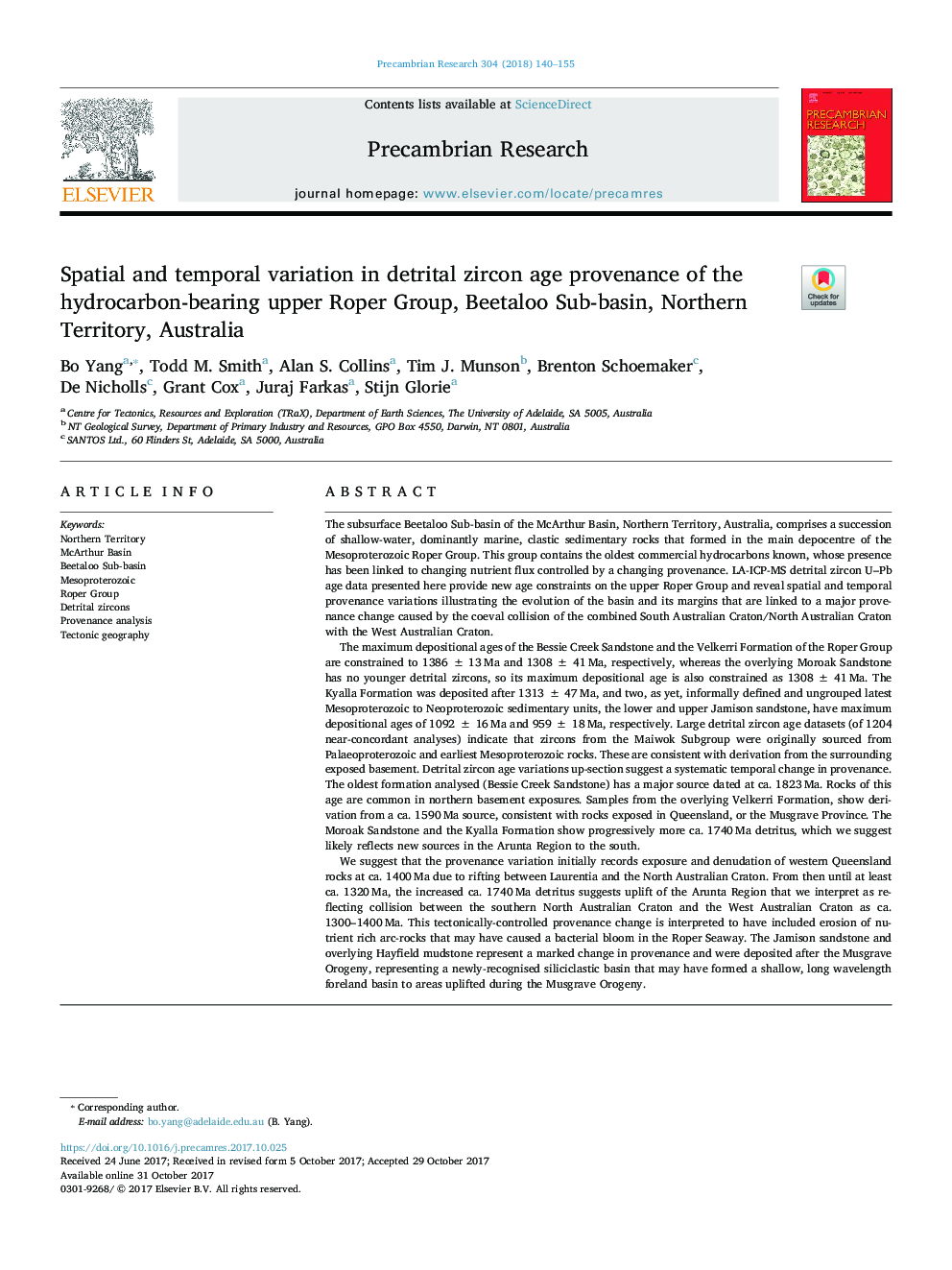| Article ID | Journal | Published Year | Pages | File Type |
|---|---|---|---|---|
| 8912703 | Precambrian Research | 2018 | 16 Pages |
Abstract
We suggest that the provenance variation initially records exposure and denudation of western Queensland rocks at ca. 1400â¯Ma due to rifting between Laurentia and the North Australian Craton. From then until at least ca. 1320â¯Ma, the increased ca. 1740â¯Ma detritus suggests uplift of the Arunta Region that we interpret as reflecting collision between the southern North Australian Craton and the West Australian Craton as ca. 1300-1400â¯Ma. This tectonically-controlled provenance change is interpreted to have included erosion of nutrient rich arc-rocks that may have caused a bacterial bloom in the Roper Seaway. The Jamison sandstone and overlying Hayfield mudstone represent a marked change in provenance and were deposited after the Musgrave Orogeny, representing a newly-recognised siliciclastic basin that may have formed a shallow, long wavelength foreland basin to areas uplifted during the Musgrave Orogeny.
Related Topics
Physical Sciences and Engineering
Earth and Planetary Sciences
Geochemistry and Petrology
Authors
Bo Yang, Todd M. Smith, Alan S. Collins, Tim J. Munson, Brenton Schoemaker, De Nicholls, Grant Cox, Juraj Farkas, Stijn Glorie,
